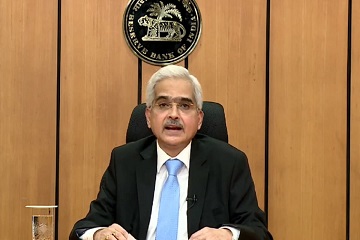Says the financial sector in a country and the individual entities including banks, NBFCs and other entities have to be resilient at all times.
NEW DELHI: “The Indian banking system has remained resilient and not adversely impacted by recent events in the global financial ecosystem," said RBI Governor Shaktikanta Das while speaking at the Global Conference on Financial Resilience organised by RBI-promoted College of Supervisors.
“The financial sector in a country and the individual entities therein like banks, non-banking financial companies (NBFCs) and other entities have to be resilient at all times. They should have the inner strength to withstand even the most stressful times. So far as India is concerned, the Reserve Bank of India has significantly strengthened its regulations and supervision of banks and other regulated entities in recent years. Our approach has been to enhance the resilience as well as the robustness of the financial sector so that individual entities effectively withstand stressful situations and continue to contribute to the process of economic development of the country. In my address today, I propose to highlight the expectations of the Reserve Bank of India from the stakeholders in the Indian financial system,” Das said.
He further said that a resilient future ready bank needs to be financially, operationally and organisationally resilient. To be financially resilient, a bank should have adequate capital buffers and be able to generate earnings even in times of severe macroeconomic shocks. It should also have adequate liquidity to meet its obligations in various situations. Therefore, financial resilience is closely linked to a bank’s business model and strategy. The Reserve Bank has, therefore, started looking at the business models of banks more closely. Aspects or deficiencies in the business model itself can spark a crisis in due course. We have not only prescribed regulatory norms for capital adequacy and liquidity ratios, but even gone beyond to nudge banks to build up capital buffers in good times and times of plenty. We did this during the COVID-19 pandemic when there was plenty of liquidity, the interest rates were low and the full impact of the pandemic on the financial sector was still highly uncertain, he added.
He said that the recent events in the banking landscape of the US and Europe suggest that risks for an individual bank could crop up from segments of its balance sheet which might have been considered relatively safer. Hence, we expect the management and Board of Directors of each bank to continually assess the financial risks and focus on building up adequate capital and liquidity buffers even beyond the regulatory minimum for continued resilience and sustainable growth, he stressed.
Das said that the rapid developments and innovations in the financial system, especially in the areas of fintech and digital products pose new opportunities as well as risks. These may affect financial intermediation, payment systems, cyber security and consumer protection. We have to continue monitoring and assessing the implications of these emerging trends, while also developing our own capabilities and frameworks to effectively respond to these challenges, he said.


